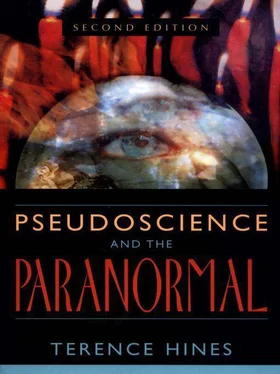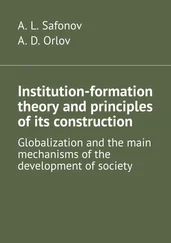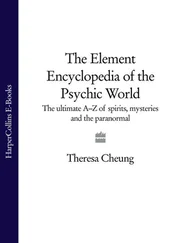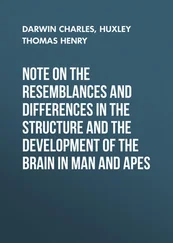In spite of the fact that phrenology was a pseudoscience, it had an important effect on society and a large influence on the development of thought about brain function. However, today one does not find any treatment of phrenology, other than as historical curiosity, in texts on psychology or neurology. This seems to be an appropriate treatment and one that, in the future, psychoanalysis should be accorded more frequently.
This discussion of psychoanalysis has just scratched the surface of the critical literature on the topic. Books by Bandura (1969, especially chap. 2), Sulloway (1979), Grunbaum (1984), Crews (1986, 1998), Webster (1995), MacMillian (1997), and Cioffi (1998), as well as an earlier paper by Cioffi (1970), all provide much more detailed discussions. Webster’s, book is especially well done in its coverage of Freud’s misrepresentation of the “cures” he claimed to have brought about.
Carl Gustav Jung was a devoted follower of Freud who later broke with strictly Freudian psychoanalysis over several theoretical issues. He merits special mention here because he was rather a mystic and two of his ideas have entered the mainstream of paranormal thinking. Jung was interested in astrology and actually conducted some astrological research. He was not particularly a believer in astrology, but felt that astrologers were occasionally accurate through what would now be called clairvoyance or ESP. Jung also had a lifelong interest in coincidences that resulted in the development of his concept of synchronicity or meaningful coincidences . According to this view, some events that would be considered coincidences were actually meaningful, although they were not related through cause and effect. Von Franz (1964) gives an example: “If I bought a blue frock and, by mistake, the shop delivered a black one on the day one of my near relatives died, this would be a meaningful coincidence. The two events are not causally related, but they are connected by the symbolic meaning that our society gives to the color black” (p. 211). The coincidental events are not causally related, but the meaning is, according to Jung, not just meaning imposed by the individual who experiences the coincidence. Jung believed that such coincidences do not occur at random. Rather, they tend to take place at psychologically important times in an individual’s life. The coincidences are a manifestation of various archetypes , basic ideas or concepts stored in the collective unconscious , another Jungian concept. The collective unconscious was the storehouse of the accumulated memories and forms of behavior that date back to the dawn of the human species. The archetypes could express themselves via meaningful coincidences. To continue with von Franz’s example: “To illustrate this in the case of the black frock: In such a case the person who receives the black frock might also have had a dream on the theme of death. It seems as if the underlying archetype is manifesting itself simultaneously in inner and external events. The common denominator is a symbolically expressed message—in this case a message about death” (p. 211). It is no trick at all to find “meaningful coincidences” if you look for them and, as always in this sort of theory, you are permitted to interpret the “meaning” of the event through symbolism. Thus, the concept that Jung felt was equal in importance to the notion of causality itself turns out to be yet another example of constructive and selective memory and perception.
A great lover of symbolic interpretation, although the nature of his symbols differed greatly from those of Freud, Jung found in the myths and legends of numerous cultures evidence for the various archetypes he believed to exist in the collective unconscious. Jung was fond of pointing out that myths and legends of cultures around the globe had symbols and meanings in common. This he interpreted as evidence for the collective unconscious. One need not, however, postulate a collective unconscious to explain the similarities of the myths and legends of different peoples. All human cultures have existed on the same planet and have faced the same basic problems, such as finding food and a mate, avoiding predators and enemies, securing protection from terrible weather and geologic phenomena, raising children, and so forth. Thus, it is inevitable that the myths and legends of all peoples will share common features (Barnard 1966; Vitaliano 1973). This is true even if one looks only at the obvious (nonsymbolic) characteristics of myths and legends and does not further enhance the seeming number and psychological significance of the common features by using spurious symbolic interpretation, as Jung did.
Humanistic psychology, which became popular in the 1960s and 1970s, grew out of a dissatisfaction with both psychoanalytic and behavioral approaches, especially where therapy was concerned. Both psychoanalytic and behavioral approaches are deterministic in that both view human behavior as determined and controlled—either by ids, egos, and various complexes, in the case of psychoanalysis, or by reinforcers and punishers, in the case of behaviorism. Neither approach, the humanistic psychologists felt, gave any attention to human free will, which became a focal point for humanistic psychology and therapy. Humanistic therapy is said to be “client centered” or “nondirective.” The therapist is supposed to give “unconditional positive regard, supporting the client regardless of what she or he says or does. Instead of interpreting or instructing, the therapist clarifies the client’s feelings by restating what has been said” (Bootzin et al. 1986, p. 590). If all this sounds vague, vagueness is one of the major characteristics of humanistic psychology. Out of this vagueness has grown most of the hollow and vacuous “psychobabble” (Rosen 1977) that makes up current pop psychology. For example, one major concept in humanistic psychology is that of “self-actualization,” a term coined by Abraham Maslow (1966). Stripped of its psychobabble, the term boils down to “be happy in your work and play, and be nice to others.” It’s hard to argue with that as a goal, but it is not very helpful in dealing with real problems of human beings.
Since its founding, humanistic psychology has spewed forth literally hundreds of different brands of “therapy,” all couched in layers of vacuous psychobabble and containing considerable amounts of pseudoscience. The “human potential” movement, with its emphasis on self-actualization and “getting in touch with yourself,” is an outgrowth of humanistic psychology. Rosen (1977) has critiqued several of the better-known therapies that have grown out of humanistic psychology. Arthur Janov’s primal therapy, which involves screaming about your anger and frustration, is one example. Another is “rebirthing,” which involves reexperiencing the birth process by means of tubs of warm water and shallow breathing. Sadly, in April 2000 a ten-year-old girl in Colorado was killed while being subjected to a version of rebirthing therapy. The therapist and the girl’s adoptive mother wrapped her so tightly in blankets that she suffocated. The idea was that she had to fight to get out of the blankets to prove that she wanted to live. This type of tragedy shows that these sorts of fringe therapies are not just harmless diversions for the worried well. They can be—and are—deadly. Also to be found are adherents of the late psychoanalyst Wilhelm Reich who believed that an energy called “orgone energy” could cure mental and physical disease. Reich also believed that dowsing rods operated by orgone energy and that the energy was blue (Gardner 1957). Happily for Reich, orgone energy could be accumulated in special phone booth-sized boxes in which the patient who wished to take the cure sat. Reich rented these for about $250 a month until the government put this particular fraud out of business in the mid-1950s (Janssen 1980). One famous practitioner of psychobabblology and psychobabble therapy is Leo Buscaglia, who seems to believe that if we’d all just hug everyone, most of our own and the world’s problems would go away (Buscaglia 1983). Such a naive view exemplifies the intellectual sterility of humanistic psychology.
Читать дальше












